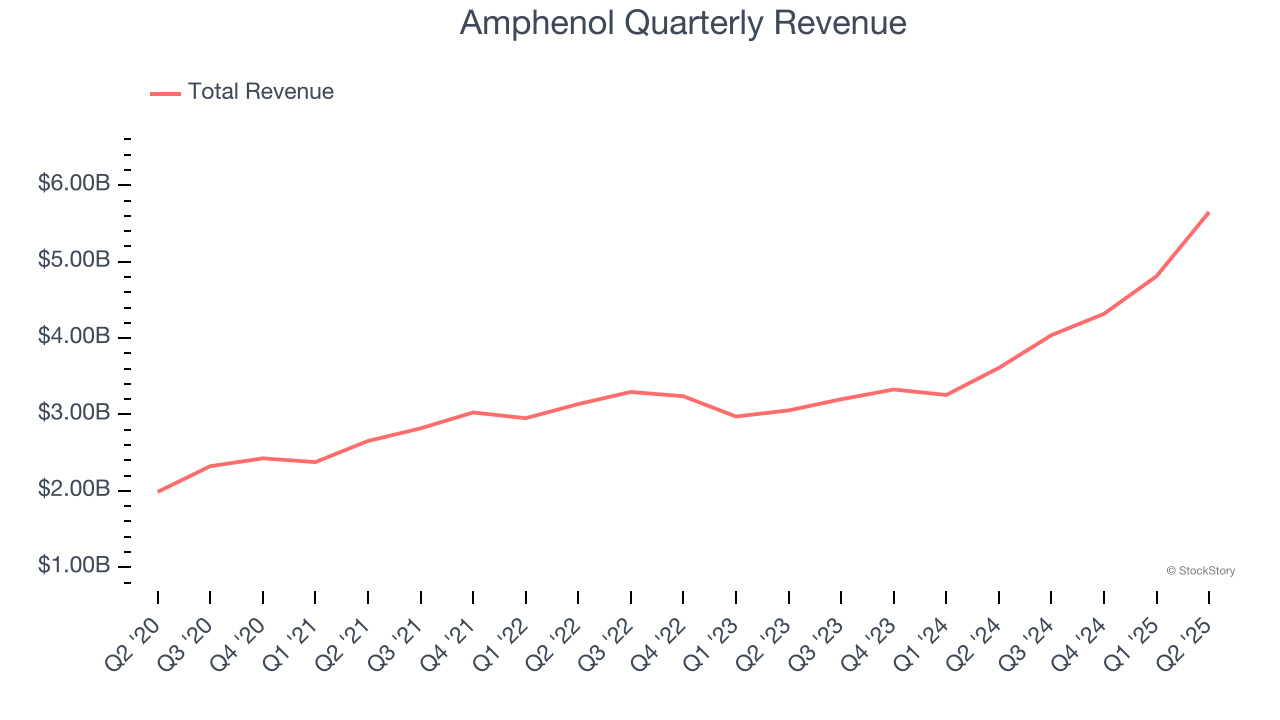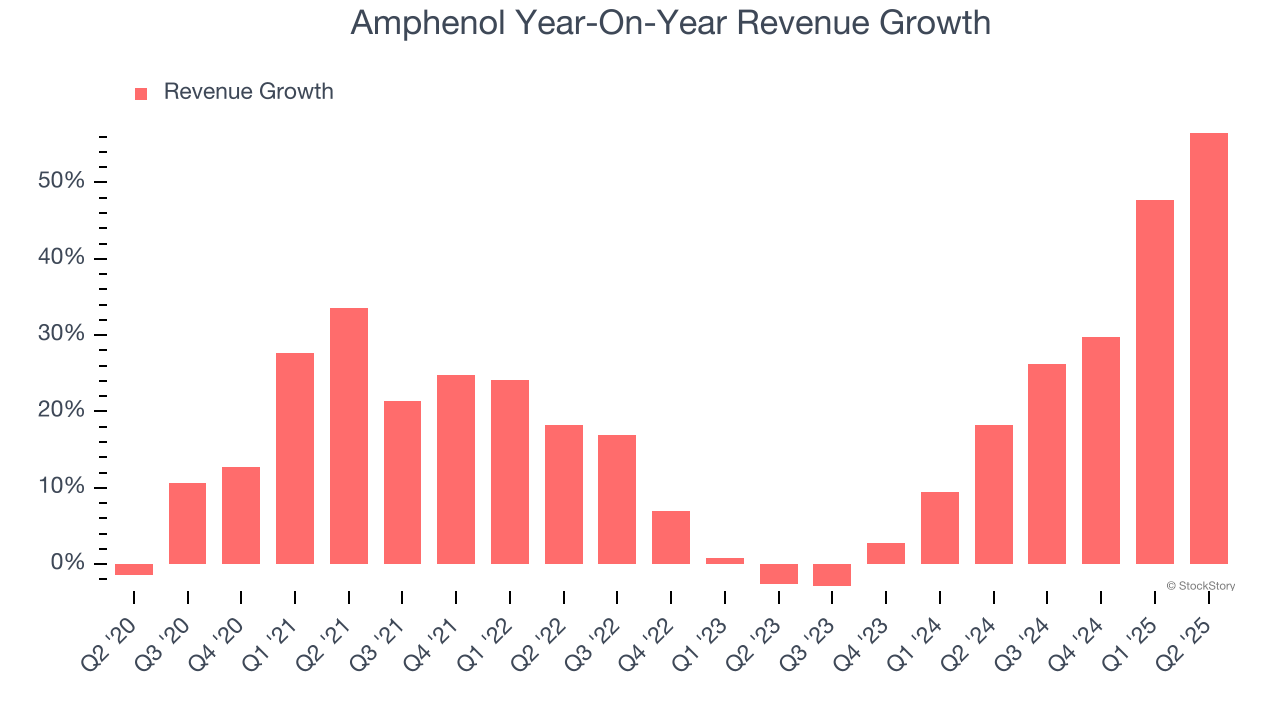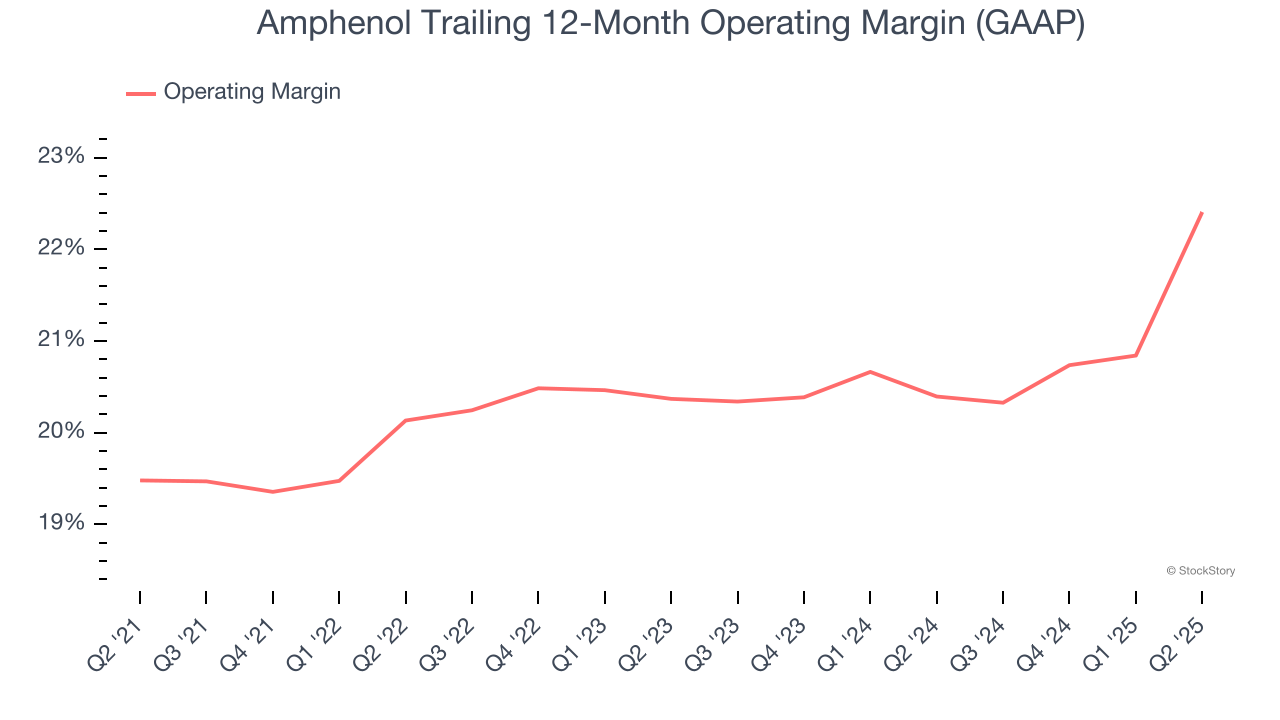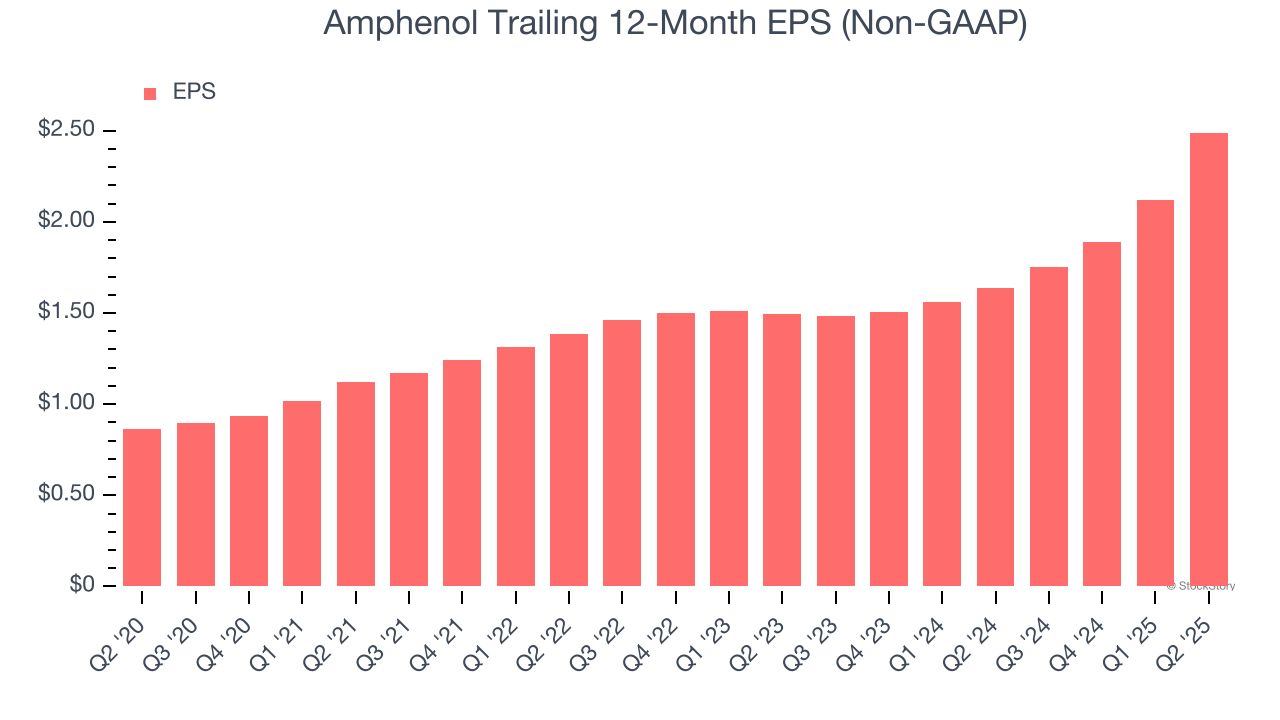
Electrical connector manufacturer Amphenol (NYSE: APH) reported revenue ahead of Wall Street’s expectations in Q2 CY2025, with sales up 56.5% year on year to $5.65 billion. On top of that, next quarter’s revenue guidance ($5.45 billion at the midpoint) was surprisingly good and 4.6% above what analysts were expecting. Its non-GAAP profit of $0.81 per share was 21.7% above analysts’ consensus estimates.
Is now the time to buy Amphenol? Find out by accessing our full research report, it’s free.
Amphenol (APH) Q2 CY2025 Highlights:
- Revenue: $5.65 billion vs analyst estimates of $5.05 billion (56.5% year-on-year growth, 11.9% beat)
- Adjusted EPS: $0.81 vs analyst estimates of $0.67 (21.7% beat)
- Adjusted EBITDA: $1.66 billion vs analyst estimates of $1.43 billion (29.4% margin, 16.1% beat)
- Revenue Guidance for Q3 CY2025 is $5.45 billion at the midpoint, above analyst estimates of $5.21 billion
- Adjusted EPS guidance for Q3 CY2025 is $0.78 at the midpoint, above analyst estimates of $0.69
- Operating Margin: 25.1%, up from 19.4% in the same quarter last year
- Free Cash Flow Margin: 19.8%, up from 14.5% in the same quarter last year
- Market Capitalization: $123.1 billion
“We are pleased to have closed the second quarter of 2025 with record sales and Adjusted Diluted EPS, both significantly exceeding the high end of our guidance,” said Amphenol President and Chief Executive Officer, R. Adam Norwitt.
Company Overview
With over 90 years of connecting the world's technologies, Amphenol (NYSE: APH) designs and manufactures connectors, cables, sensors, and interconnect systems that enable electrical and electronic connections across virtually every industry.
Revenue Growth
A company’s long-term sales performance can indicate its overall quality. Any business can have short-term success, but a top-tier one grows for years.
With $18.82 billion in revenue over the past 12 months, Amphenol is a behemoth in the business services sector and benefits from economies of scale, giving it an edge in distribution. This also enables it to gain more leverage on its fixed costs than smaller competitors and the flexibility to offer lower prices.
As you can see below, Amphenol grew its sales at an incredible 18.4% compounded annual growth rate over the last five years. This is a great starting point for our analysis because it shows Amphenol’s demand was higher than many business services companies.

Long-term growth is the most important, but within business services, a half-decade historical view may miss new innovations or demand cycles. Amphenol’s annualized revenue growth of 22.4% over the last two years is above its five-year trend, suggesting its demand was strong and recently accelerated. 
This quarter, Amphenol reported magnificent year-on-year revenue growth of 56.5%, and its $5.65 billion of revenue beat Wall Street’s estimates by 11.9%. Company management is currently guiding for a 34.9% year-on-year increase in sales next quarter.
Looking further ahead, sell-side analysts expect revenue to grow 12.8% over the next 12 months, a deceleration versus the last two years. We still think its growth trajectory is attractive given its scale and indicates the market is baking in success for its products and services.
Software is eating the world and there is virtually no industry left that has been untouched by it. That drives increasing demand for tools helping software developers do their jobs, whether it be monitoring critical cloud infrastructure, integrating audio and video functionality, or ensuring smooth content streaming. Click here to access a free report on our 3 favorite stocks to play this generational megatrend.
Operating Margin
Amphenol has been a well-oiled machine over the last five years. It demonstrated elite profitability for a business services business, boasting an average operating margin of 20.8%.
Looking at the trend in its profitability, Amphenol’s operating margin rose by 2.9 percentage points over the last five years, as its sales growth gave it operating leverage.

This quarter, Amphenol generated an operating margin profit margin of 25.1%, up 5.8 percentage points year on year. This increase was a welcome development and shows it was more efficient.
Earnings Per Share
We track the long-term change in earnings per share (EPS) for the same reason as long-term revenue growth. Compared to revenue, however, EPS highlights whether a company’s growth is profitable.
Amphenol’s EPS grew at an astounding 23.6% compounded annual growth rate over the last five years, higher than its 18.4% annualized revenue growth. This tells us the company became more profitable on a per-share basis as it expanded.

Diving into the nuances of Amphenol’s earnings can give us a better understanding of its performance. As we mentioned earlier, Amphenol’s operating margin expanded by 2.9 percentage points over the last five years. This was the most relevant factor (aside from the revenue impact) behind its higher earnings; interest expenses and taxes can also affect EPS but don’t tell us as much about a company’s fundamentals.
Like with revenue, we analyze EPS over a more recent period because it can provide insight into an emerging theme or development for the business.
For Amphenol, its two-year annual EPS growth of 29.1% was higher than its five-year trend. We love it when earnings growth accelerates, especially when it accelerates off an already high base.
In Q2, Amphenol reported EPS at $0.81, up from $0.44 in the same quarter last year. This print easily cleared analysts’ estimates, and shareholders should be content with the results. Over the next 12 months, Wall Street expects Amphenol’s full-year EPS of $2.49 to grow 13%.
Key Takeaways from Amphenol’s Q2 Results
We were impressed by how significantly Amphenol blew past analysts’ EPS expectations this quarter. We were also excited its EPS guidance for next quarter outperformed Wall Street’s estimates by a wide margin. Zooming out, we think this was a solid print. The stock traded up 5.3% to $107.24 immediately following the results.
Indeed, Amphenol had a rock-solid quarterly earnings result, but is this stock a good investment here? The latest quarter does matter, but not nearly as much as longer-term fundamentals and valuation, when deciding if the stock is a buy. We cover that in our actionable full research report which you can read here, it’s free.






